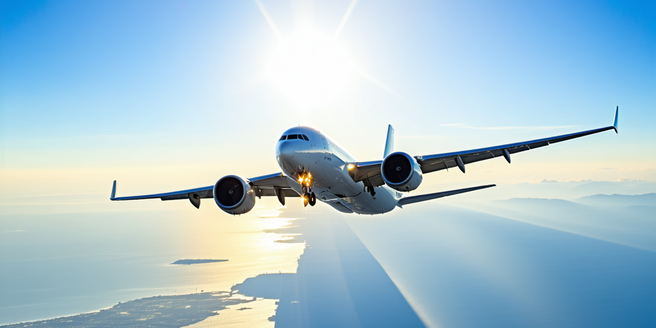
Understanding Solar Radiation and Its Impact on Aviation
Solar radiation refers to the electromagnetic radiation emitted by the sun, which includes visible light, ultraviolet light, and other types of energy. For aviation, solar radiation is a significant concern as it increases with altitude and latitude, directly impacting flight crews and passengers. High-energy particles can affect onboard electronics, leading to communication and navigation disruptions. This is particularly important for flights over polar regions, where solar radiation exposure is typically higher. Moreover, exposure to enhanced levels of cosmic radiation is a risk factor for aircrew health. Understanding these impacts is crucial for implementing measures to mitigate potential risks effectively. By studying solar activity and forecasting potential events, the aviation industry can better prepare and respond to solar storms, ensuring the safety and reliability of flight operations.
Health Risks Associated with Solar Radiation for Flight Crews
Flight crews are particularly vulnerable to solar radiation due to their frequent exposure during high-altitude flights. Prolonged exposure to elevated levels of cosmic and solar radiation can increase the risk of health issues such as skin cancer, cataracts, and other radiation-induced conditions. The International Commission on Radiological Protection has recommended limits on occupational exposure to radiation, emphasizing the need for monitoring and protective measures. Airlines are required to assess and manage the radiation doses received by their crew members, using it as a basis to implement protective strategies. This includes scheduling adjustments and providing protective shielding on aircraft, particularly during periods of heightened solar activity. Ongoing research continues to improve our understanding of these risks and enhance safety protocols for aviation personnel.
Technological Measures to Monitor Solar Activity
With the increasing awareness of the impact of solar radiation on aviation, there is a growing emphasis on developing advanced technologies to monitor solar activity. Real-time monitoring systems and predictive models are employed to track solar flares and cosmic radiation levels. Satellite-based systems and ground-based observatories work together to observe the sun’s behavior and provide early warnings of solar storms and high-radiation events. This data is crucial for flight operations planning, enabling airlines to adjust flight paths or altitudes to minimize exposure. Moreover, onboard radiation detection systems are being integrated into newer aircraft models to provide real-time data to pilots. These technological advancements play a critical role in safeguarding the aviation industry against the adverse effects of solar radiation.
Protective Measures for Passengers and Crew
Ensuring the safety of passengers and crew from solar radiation involves a set of protective measures designed to minimize exposure. Aircraft are constructed using materials that offer some degree of radiation shielding, although the effectiveness varies with the type and intensity of radiation. During flights, particularly those over polar routes where radiation is higher, airlines may alter flight paths, altitudes, and timings based on real-time solar activity data. Additionally, educational programs for flight crews raise awareness about radiation risks and appropriate responses in case of solar storms. Some airlines also incorporate in-flight monitoring devices to assess radiation levels continuously. These protective measures collectively contribute to reducing the health risks associated with solar radiation and maintaining safe flight operations.
Future Innovations in Aviation Safety Against Solar Radiation
The aviation industry continues to explore technological advancements to enhance safety measures against solar radiation. Future innovations may include the development of more sophisticated onboard radiation shielding materials and advanced prediction models powered by artificial intelligence. These models could analyze real-time data to predict solar events hours or even days in advance, allowing for proactive operational adjustments. The integration of blockchain technology could further enhance the accuracy and reliability of radiation monitoring and data sharing among airlines, improving coordinated response efforts. Additionally, research is underway to explore genetic and biomedical solutions that could provide regenerative protection for frequent flyers. As technology progresses, these innovations hold the promise of further strengthening aviation safety against the ever-present challenge of solar radiation.
